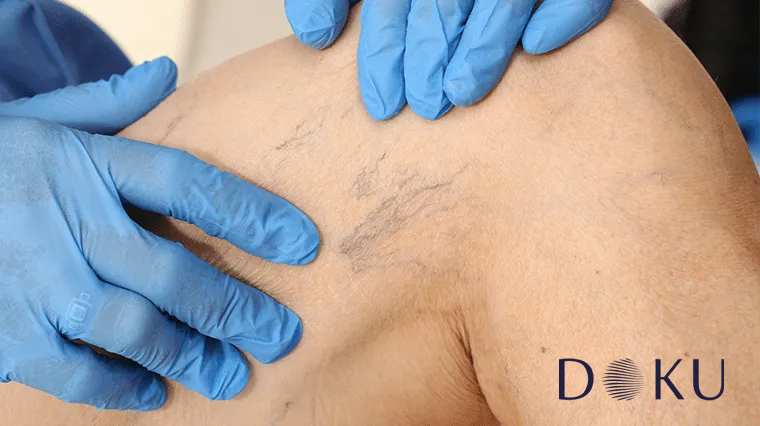Capillary Treatment

Capillary Vessel Treatment; Capillary vessel disorder, commonly known as varicose veins, occurs as a problem of vein dilation especially on the face and legs, and is seen in 15% of the population. Capillaries, which become more prominent due to the effects of sunlight and cause a red appearance on the skin, can be aesthetically disturbing for individuals.
What are Capillaries?
Capillaries are the veins located in the layer of the skin closest to the surface. Since they are located in the uppermost layer, they become visible on the skin surface due to various factors. Capillaries can appear anywhere on the body, but they are most commonly observed on the face and legs.
Capillary fractures on the face cause redness in addition to a veiny appearance. These cracks and redness can make individuals dissatisfied with their appearance, leading to aesthetic concerns.
Capillaries seen on the legs usually occur due to deformations. People who are required to stand for long parts of the day are more likely to experience capillary problems in their legs.
Environmental factors can also cause capillary problems. Prolonged sun exposure, hormone therapy, use of birth control pills, corticosteroid creams, and some internal diseases can trigger the problem.
In addition, capillaries may dilate due to aging and genetic predisposition. You can contact us to learn more about capillary vessel treatment.
What is Laser Capillary Vessel Treatment?
Capillary vessel problems that appear on the face or many parts of the body can be treated comfortably with laser. The procedure is easy and smooth for the patient. Anesthesia is not required during treatment because this procedure does not cause pain or discomfort.
Laser capillary treatment primarily targets a substance in the blood called oxyhemoglobin. This substance is heated during the laser treatment process. As the blood in the vessel heats excessively, the damaged vessels gradually disappear. The vessel diameter and the amount of blood, and therefore the amount of oxyhemoglobin, are directly proportional. For this reason, larger vessels can be treated more easily than smaller ones.
Laser treatments are very effective for capillaries smaller than 3 millimeters in diameter and those that are purple, dark blue, or dark red in color. However, very light red or pink vessels are more difficult to treat, and therefore more sessions may be required.
How is Laser Capillary Vessel Treatment Performed?
After consultation with dermatology specialists, a treatment protocol is determined for the capillary vessel problem. Depending on the shape, color, and skin type of the capillaries, the dermatologist selects a suitable laser and laser head. These lasers and heads have different properties tailored to the structure of the capillaries.
How Many Sessions are Required?
In treatment, some capillaries disappear immediately during the procedure, while others fade and disappear within 4–8 weeks. Generally, one or two sessions of laser capillary treatment are sufficient. However, the duration and number of sessions may vary from person to person.
What Should Be Considered After the Procedure?
After treatment, it is important to avoid sun exposure. This is because excessive sun exposure following laser capillary treatment can cause peeling of the skin surface. Therefore, the use of sunscreen creams after treatment is important to protect skin health. In addition, solariums are not recommended after treatment.
It is also necessary to avoid very hot showers after treatment. In people with sensitive skin, temporary side effects such as crusting and redness may occur after the procedure, but these effects are short-term and temporary.
